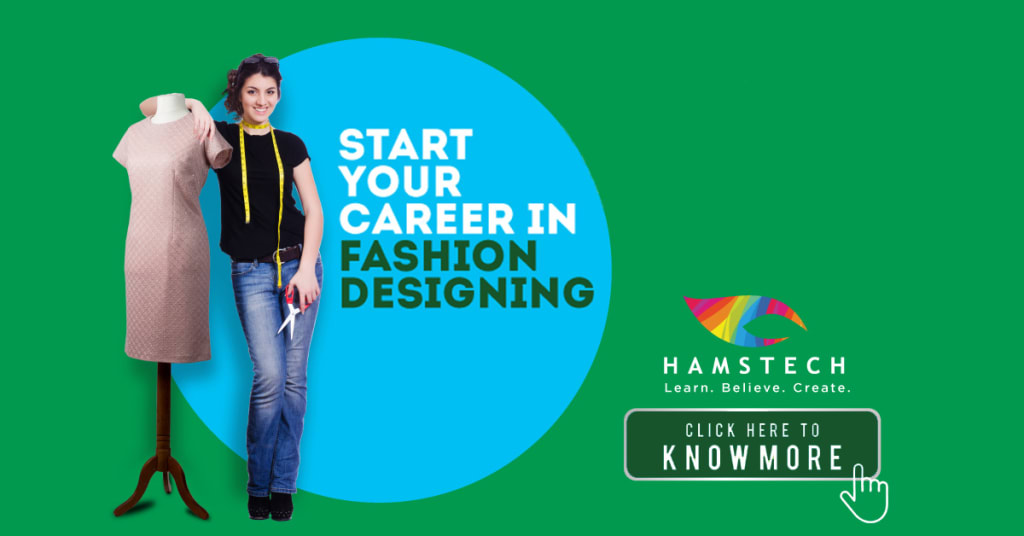Pleated skirts are trendy and look great when worn. Every girl’s wardrobe has a pleated skirt that might be long or short. Depending upon the mood you can pair this with whatever you want, as it goes good with anything. But most of us don’t even try pairing it with others. For those here are the best styling tips for pleated skirts.
Designing an outfit and bringing it to life is not that easy. But you can make out by acing the designing skills. You can master your fashion designing skills just by joining a Fashion Design Course. Hamstech offers a Fashion Design Course through which you will be able to design outfits stylish and fashionable.
Pleats which are sewn down work great for those with a longer waist. The reason is they lay flatter and create a slimming effect. Hourglass figures must go with accordion pleats because the folds are in alternating opposite directions, which look fuller in the hips. Knife pleats have less volume and give a slimming effect on the bottom area which suits best for those with a rounder lower half. For those with shorter legs, to appear longer, go with a higher hemline. If you are having a perfect figure and curvy body, opt for a skirt that falls nicely over your figure.
Tips for Styling a Pleated Skirt
Pleated skirts produce a slimming effect by highlighting the waist. And it is also common to pair it with a solid coloured top and heels. But don’t forget to style it with sneakers for that casual look.
- Metallic silver pleated maxi skirt paired with a tucked-in black turtleneck gives you a beautiful lengthy look. For a chic look try out the pointed heels for the finishing touch. You can pair it with a leather jacket, as an added layer, which are also trending now.
- For fashion looks pair a brown pleated maxi skirt with a beige colored solid top, which is tucked in to slim your waist. Style with a brown matching handbag to highlight the top. This beautiful silhouette creates a dramatic flair.

- If you have a pink pleated knee length skirt and don’t know what to do with it, just pair it with a black turtle neck top along with matching pink high heels for that chic look. You can also style your outfit with a black leather jacket for a casual look.
- Pair a black pleated skirt with a counter yellow colored top. To let the colour of the top pop, you also have a bold statement necklace. For a relaxed casual look, try out with sunglasses.
- A light sea green pleated maxi slit skirt can be paired with a colourful top. Or try pulling a shirt over the t-shirt. Tie the shirt near your waist and style with accessories along with high heels. Or if it is a knee length skirt, pair it with a muted print shirt along with a bold necklace.
- What can go well other than a checkered shirt? Shirts are often tucked in with a skirt. For trendy look, try wearing the shirt outside the skirt with a waist belt which produces a slimming effect
- To keep the looks simple, pair a dark pleated skirt with a light coloured printed jersey top along with sneakers. This gives you a cool and chic look.
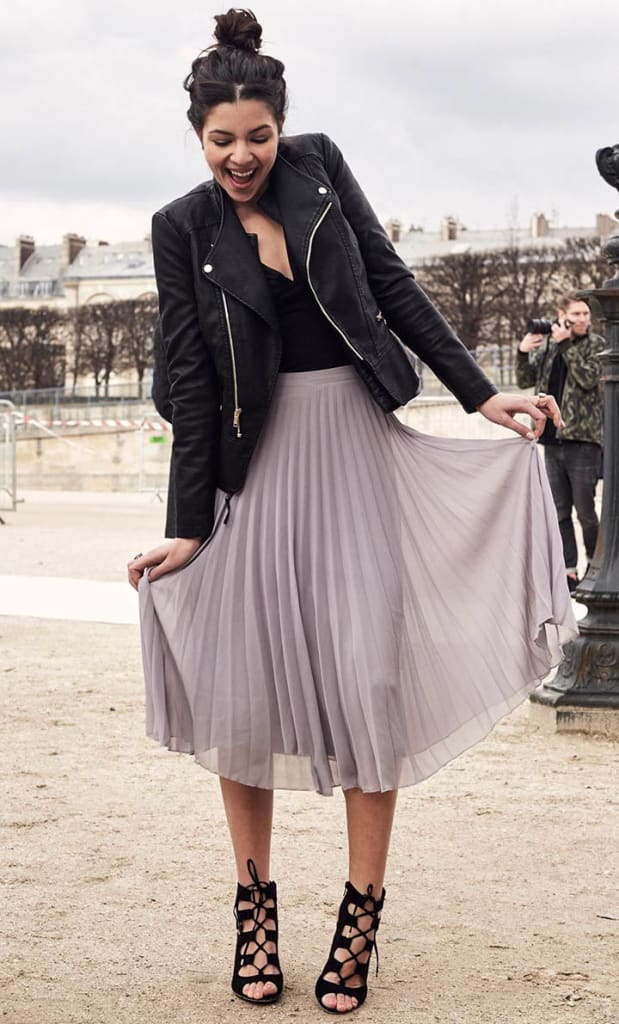
- Don’t be so afraid of opting for darker shades of skirts. Pair a darker skirt with a simple top with matching accessories and high heels. This gives a bold statement.
- For proper styles we require contrast. Try a blue denim jacket over the neutral top and see the magic which adds the colour to your outfit. For an elegant look, pair it with converse shoes.
- Pair a blush pleated skirt with black top along with shoes or high heels with a stylish purse or handbag. The contrast created between the light skirt with dark top creates the spot on.
Designers use pleats to design outfits for wearer comfort and stylish looks. Here arises questions like, what is pleating? How pleating is designed? What are the types of pleating? It’s ok. Don’t get worried about it. Now we are going to look at all those and get answered.
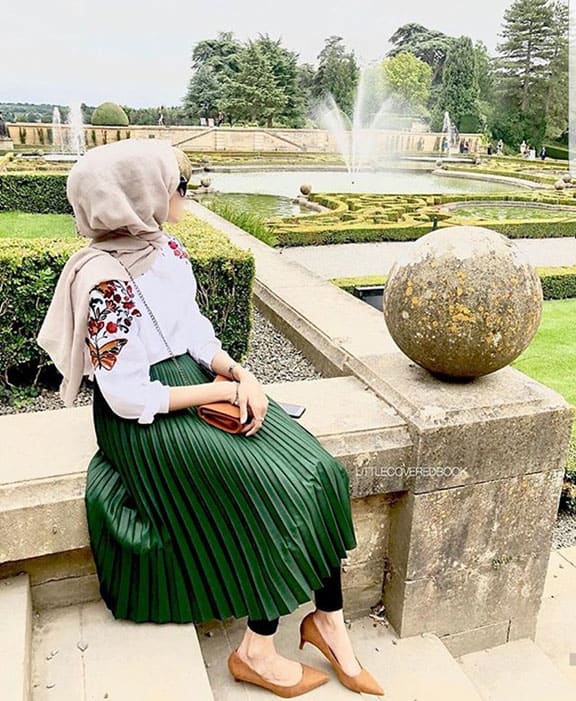
To create and design fashionable outfits, try joining our Hamstech Fashion Design Course and learn designing stunning outfits to rule the trend.
Pleating involves fabric folding into different shapes and with different volumes and textures. To pleat the fabric two pieces of card are laid flat on a table. These are then folded up into shapes and rolled up tight. Then this is placed in a steam cabinet to heat the fabric to get the required shape.
What are the different types of pleats?
A fabric can be moulded into different types of pleats. The designer commonly used pleat styles are as follows. They are:
- Flat Pleats – These can also be called knife pleats. These pleats are formed with regular similar sizes, the fabric pleats with equal lengths with half pleats over the previous one and the same repeats with the fabric. This can be done and commonly used in sewing a fabric.
- Flat Pleats Flared – These can also be called graduated pleats. In this style the width of the pleats at the bottom varies the width of the pleats at hemline i.e.; near waist.
- Straight Box Pleats – In this style, the approaches combine together to form a box shape. Hold the fabric at two points and bring them together to form a box shape. Repeat the same with equal distance with the whole fabric. Inverted box pleats have the box shape inside the fabric rather than outside.
- Accordion Pleats – This style of pleats allow the garments to expand while moving. This is named because it looks like an accordion. These pleats are formed in which both folds have the same length.
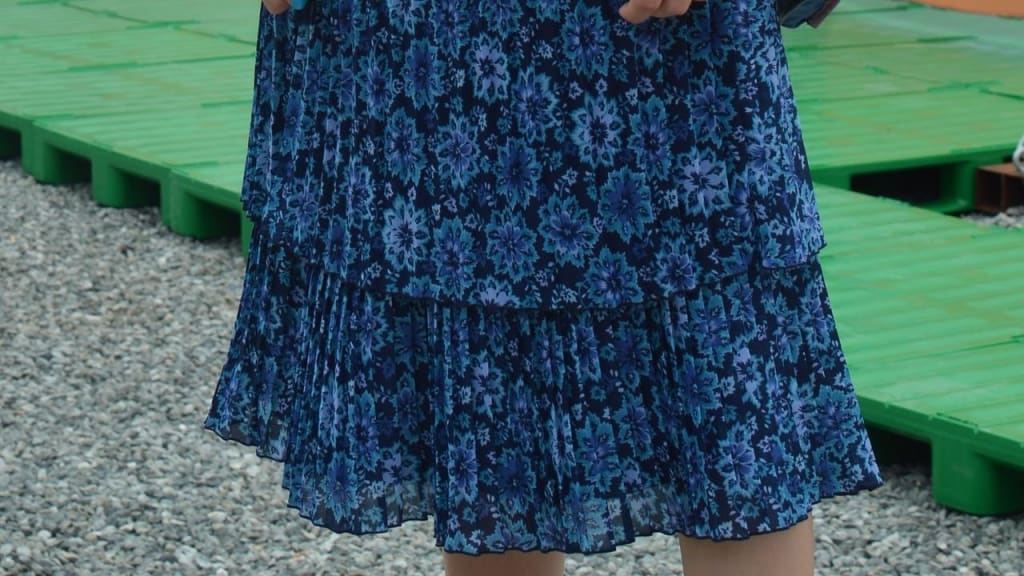
- Crystal Pleats – These pleats are the same as the accordion pleats but they are of every small width. The width of the pleats on both sides will just be 2-3mm.
- Sunray Pleats – These pleats are pleated in a semicircle with graduated accordion pleats. These pleats are smaller at the waist and get wider towards the edge.
- Fancy Pleats – As a designer this is limited to your imagination. This can be of any manner and any style.
- Honeycomb Pleats – These pleats look good with the fabrics. The name itself refers to how it is gonna be. It looks like a honeycomb after peeling. These are narrow rolled pleats.
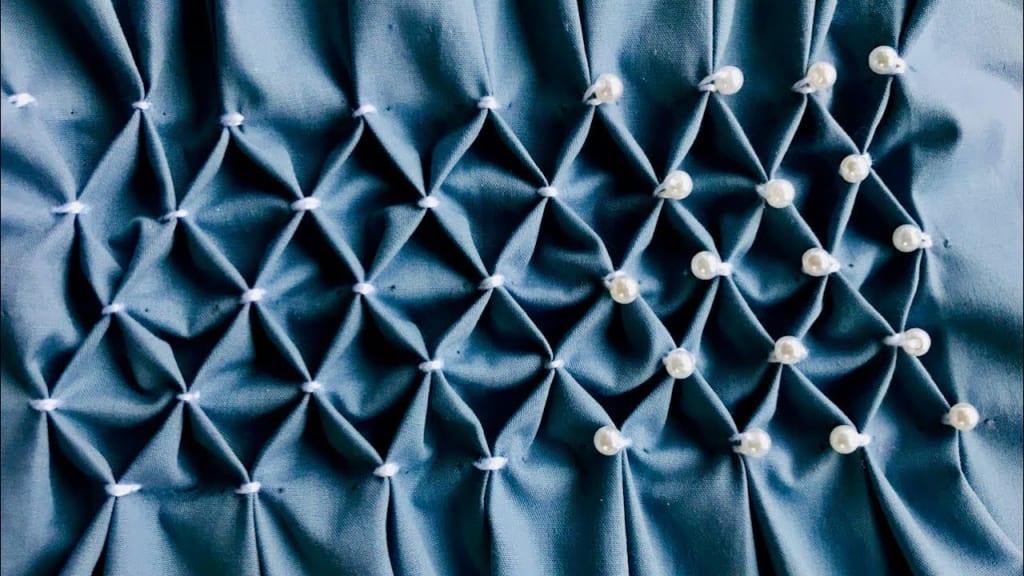
- Cartridge Pleats – These pleats form more than two rows with uniform hand basting stitches. For this the rows have to be exactly matched to form perfect pleats.
- Fortuny Pleats – These pleats are especially seen in silk fabric with crisp pleats.
- Kick Pleats – This style is basically used for school uniforms. They allow the garment to be straight down and for some skirts, the short pleats lead upwards starting from the bottom, providing freedom while moving.
- Fluted Pleats – This style of pleats are usually very small and rounded pleats.
To design and create unique pleats to trend in the market, start learning Fashion Designing by joining a Fashion Design Course.
Fashion Design Courses
Want your passion for fashion to step into a profession? You can be a successful Fashion Designer, if you can nail the creative art behind designing outfits. To ace this skill from choosing the right fabric, giving them the right cut and perfect fit. This is only possible with the right kind of Fashion Designing Classes. As there is a lot more to learn to be a professional, you just need to be consistent. For this, you need to choose the right Fashion Design Course and college.
Hamstech with its experience of over 29+ years in the field, is best for learning Fashion Design Course Institute in Hyderabad. You can get constant support from our professionals along with a celebrity mentor, Neeta Lulla, a 4-time award winning, Fashion Designer and Stylist. This is really going to help you to enhance all your skills in designing. Hamstech provides you a 6 variety of fashion design courses, through which you can be a master and step into your career as you like.
Hamstech offered courses are as follows for your reference.
- BA Hons in Fashion Design is a 3-years degree course and is curated into 6 semesters. Focused on textiles, pattern drafting and garment construction.
- Diploma in Fashion Design is a 2 years course and is curated into 4 semesters. This course is specially focused on expanding exports and development of textiles.
- Certificate Course in Fashion Design. There are two certificate courses, in which one is for 11 months and the other is for 1 year. Curated into 2 semesters and focused on developing visual and computer-aided design capabilities.
- Short-term Course in Fashion Design is just for 18-months. This course which will not only help you to learn about garment creation but also provides a 3 month immersion programme in Singapore and a 3month internship programme.
- Weekend Course in Fashion Design is a 1-year course which helps students in sharpening their designing skills.
Our Hamstech Fashion Design Courses will frame the students to opt careers such as:
- Fashion Designer
- Textile Designer
- Fashion Merchandiser
- Fashion Stylist
- Fashion Visual Display Expert
- Fashion and Lifestyle Journalist
- Fabric Coordinator
- Costume Designer
- Fashion Illustrator
Oh no! Haven’t enrolled yet? Why wait? Sign in to our Hamstech website at www.hamstech.com and enrol in one of our Hamstech Fashion Design Courses and start a journey towards your dream career.


